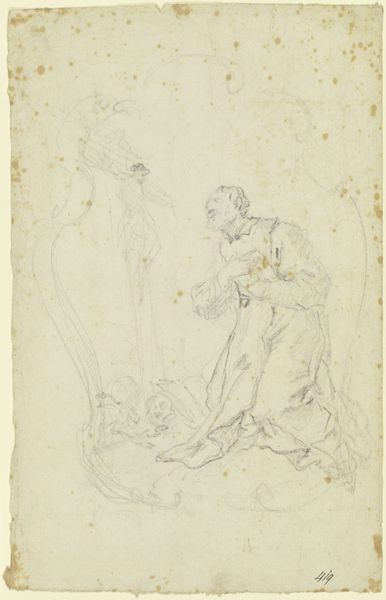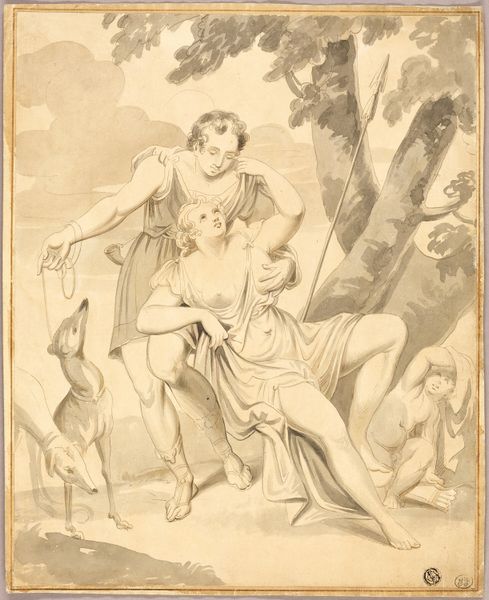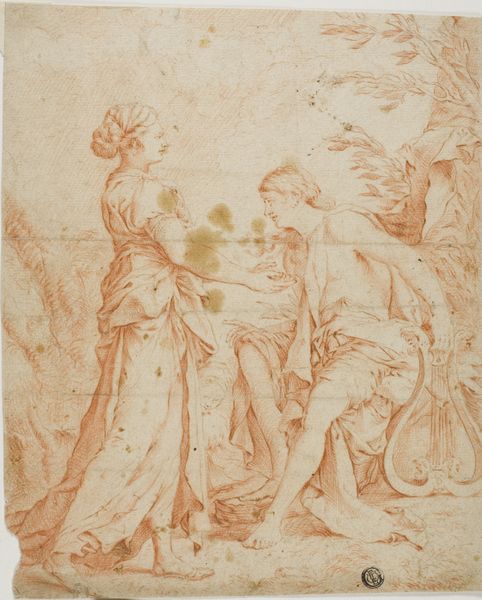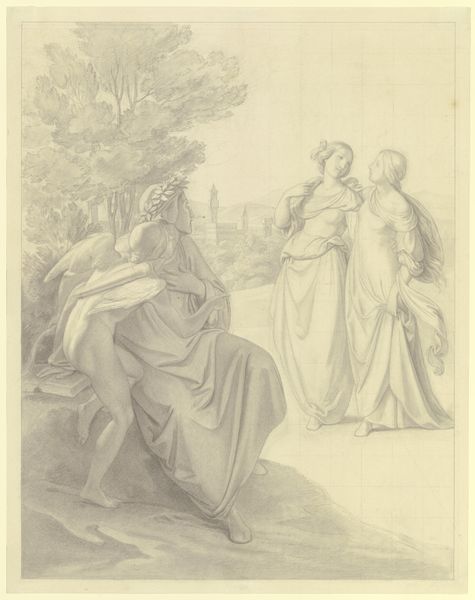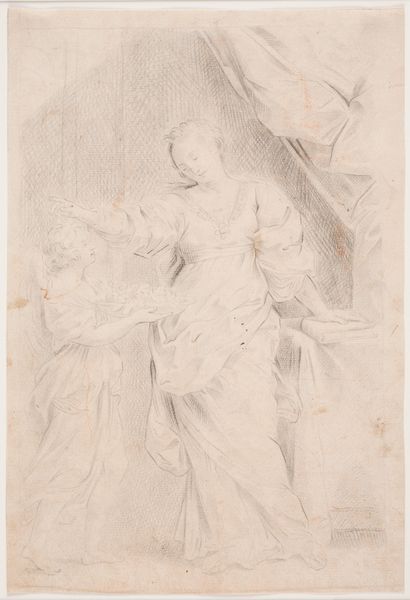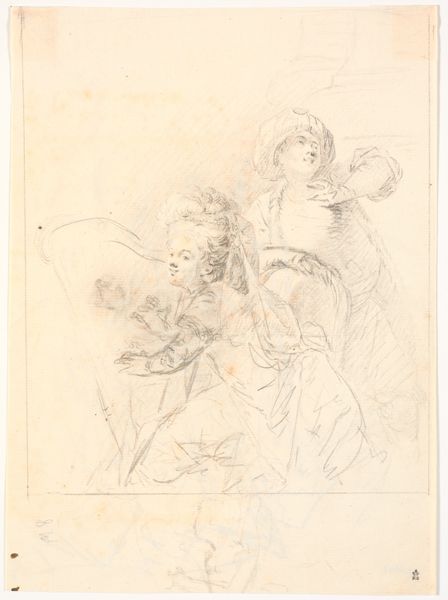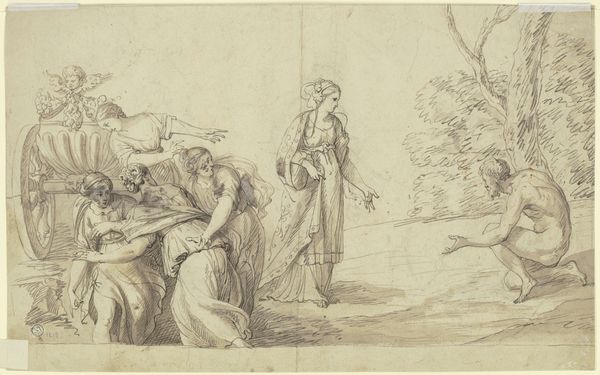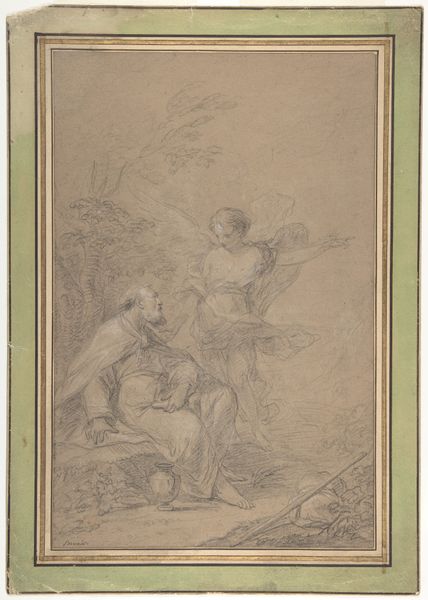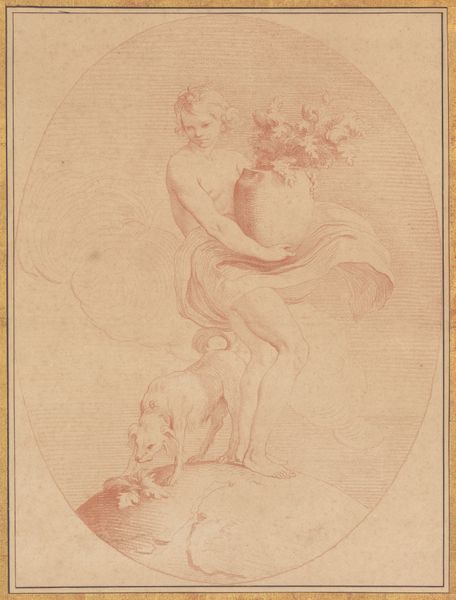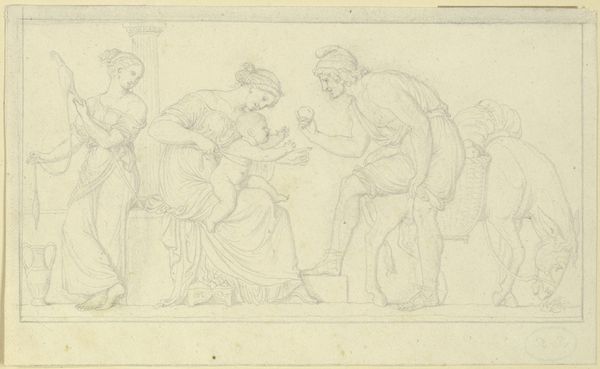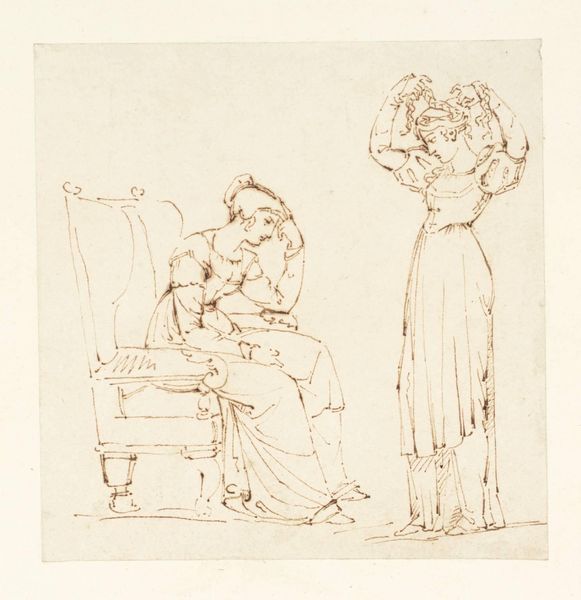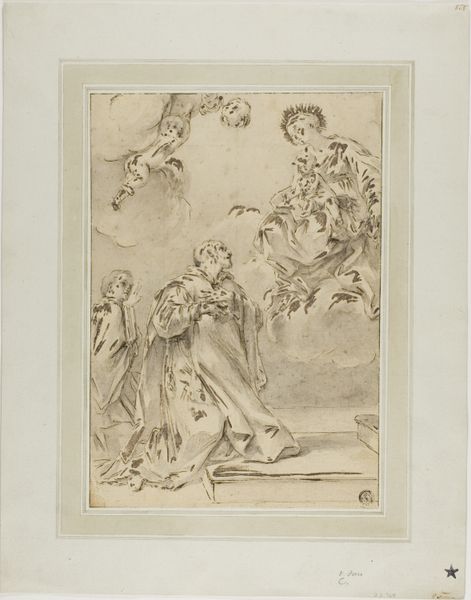
drawing, paper, ink
#
portrait
#
drawing
#
baroque
#
etching
#
figuration
#
paper
#
ink
Copyright: Public Domain
Curator: Here we have Bonaventura Lamberti's "Three Washerwomen," an ink drawing on paper, currently held at the Städel Museum. What strikes you initially about this piece? Editor: The fluid lines create a sense of constant motion. There's a graceful rhythm as they work. It evokes a very somber, almost melancholic mood for me, the muted sepia tones only adding to this impression. Curator: Yes, and focusing on Lamberti's material choices, we see how the spare use of ink on paper allows for incredible detail in depicting the figures' clothing. It's functional dress, and that the folds suggest movement is fascinating. Consider the act of drawing itself – a relatively quick process, here seemingly capturing the fleeting moments of physical labor. Editor: Exactly. The subject of women engaged in domestic labor is crucial. We're seeing the daily lives of working-class women in a historical context. Are they simply figures, or are they stand-ins for something more? Curator: I would argue we can observe Lamberti's technical skill by examining how he captured both their physical effort and the repetitive nature of their labor. Note the layering of strokes that builds form. Editor: That very repetitiveness underscores how invisible this kind of labor was, and still is, within patriarchal structures. The choice of drawing, as opposed to a more finished painting, is a glimpse into a world that wasn’t usually deemed worthy of grand representation. It prompts dialogue regarding class, gender, and the very act of artistic creation and its representation. Curator: It absolutely foregrounds that labor. The visible marks of the drawing process are inextricably linked to the marks left on those women’s bodies by their work. The materiality reinforces the social reality. Editor: Agreed, the raw strokes create a potent visualization, turning this drawing into an active space for critical observation. It reframes mundane labor as meaningful. Curator: In viewing Lamberti’s 'Three Washerwomen,' one gains insights into artistic process, yet one may not have readily gleaned that from considering subject matter alone. Editor: Exactly, art and activism combine to help the viewer see it from a gendered perspective and ask broader questions.
Comments
No comments
Be the first to comment and join the conversation on the ultimate creative platform.
